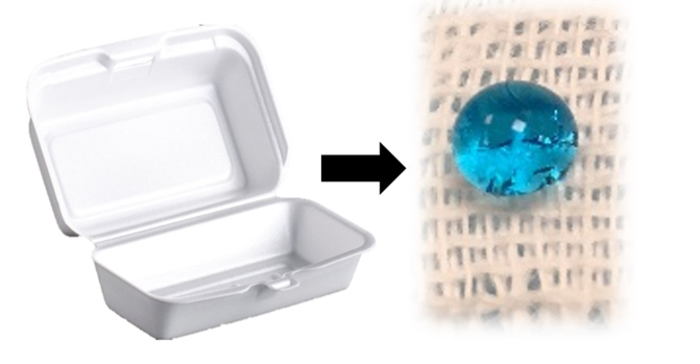Recycling Plastic Waste into Functional, Self-Cleaning Fabrics
New method of producing highly functional materials from discarded polystyrene
Globally, plastic waste is posing both a major threat to the environment but also threatens to become a major public health issue. Plastic waste accumulation from discarded items such as grocery bags, cups, bottles, and packaging materials are reaching critical levels—impacting the natural environment and threatening many animal species. Microplastics that are the result of plastic erosion and degradation pose an immediate threat to human heath as they enter our food and water systems.

Fortunately, a team of scientists led by Professor Hua Zhang of City University of Hong Kong working on new methods to recycle plastics waste have successfully discovered a method to covert waste plastic into highly functional materials using a low-cost, dip-coating method.
This research was published in the journal Nano Research
By adding silicon dioxide nanospheres to dissolved waste plastics, researchers were able to dip cotton textiles into the mixture, the product was a highly functional textile that was durable, could separate oil/water mixtures, and exhibited self-cleaning properties.
Traditionally, plastic wastes have either been diverted to landfill or faced incineration. These disposal methods, however, do not solve the solution of plastic pollution. More recently, researches have investigated use of biodegradable polymers and methods to speed decomposition through bio- and catalytic methods. Unfortunately, due to technical difficulties, low yield, and high cost, these methods have received limited support.
The team’s approach of converting the plastics into more useful products is innovative in its approach to managing waste and hopes to limit the amount of plastic diverted to landfill or incinerators.
Focused on developing superhydrophobic materials, the team of researchers set out to demonstrate that plastic waste could be a promising candidate as a raw material for low-cost preparation of superhydrophobic materials. Such materials have a variety of uses ranging from water remediation, to anti-corrosion, to self cleaning surfaces.
Using one of the most abundant waste materials—polystyrene—which is common in packing materials, food containers, and coffee cups, they dissolved the material and mixed it with silicon dioxide nanospheres. By dipping cotton fabric in the mixture and letting it dry, the team treated a coated fabric material with high durability and functionality. “Impressively, it also shows an excellent resistance towards harsh environments, such as corrosive solutions, high temperature treatment, and mechanical abrasion,” said Zhang, principal investigator.
Future applications of the material are many. Such coated textiles could be used where oil/water mixtures require separation. “In addition, the textile exhibits the self-cleaning property and the capability to be dyed and preserve its color, making it a promising material for developing self-cleaning wearable fabric materials,” Zhang said.


